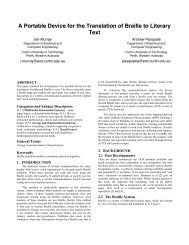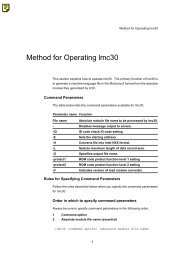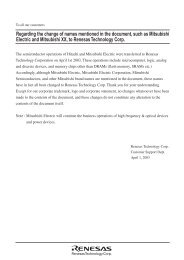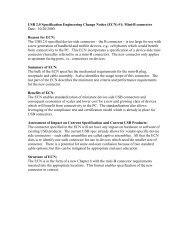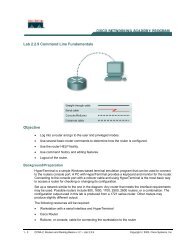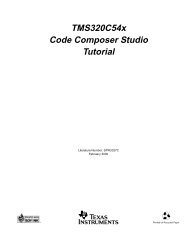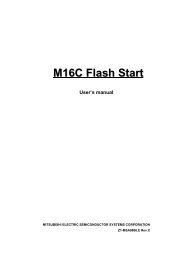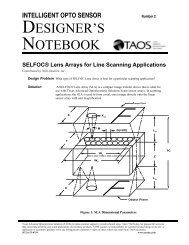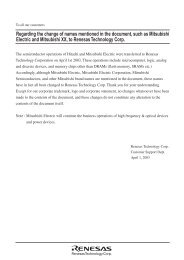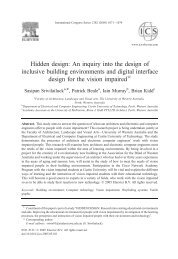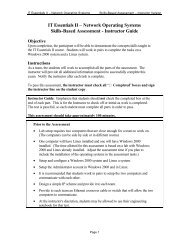"TMS320C55x DSP Library DSPLIB Programmer's Reference"
"TMS320C55x DSP Library DSPLIB Programmer's Reference"
"TMS320C55x DSP Library DSPLIB Programmer's Reference"
You also want an ePaper? Increase the reach of your titles
YUMPU automatically turns print PDFs into web optimized ePapers that Google loves.
cfirImplementation Notes The first element in the dbuffer array is present only for alignment purposes.The second element in this array (index=0) is the entry index for the inputhistory. It is treated as an unsigned 16-bit value by the function even thoughit has been declared as signed in C. The value of the entry index is equal tothe index – 1 of the oldest input entry in the array. The remaining elementsmake up the input history. Figure 4–1 shows the array in memory with an entryindex of 2. The newest entry in the dbuffer is denoted by x(j–0), which in thiscase would occupy index = 3 in the array. The next newest entry is x(j–1), andso on. It is assumed that all x() entries were placed into the array by theprevious invocation of the function in a multiple-buffering scheme.Figure 4–1, Figure 4–2, and Figure 4–3 show the dbuffer, x, and r arrays asthey appear in memory.Figure 4–1. dbuffer Array in Memory at Time joldest x( ) entrynewest x( ) entrydummy valueentry index = 2xr(j–nh–2)xi(j–nh–2)xr(j–nh–1)xi(j–nh–1)xr(j–nh)xi(j–nh)xr(j–0)xi(j–0)xr(j–1)xi(j–1)xr(j–2)xi(j–2)•lowest memory addressxr(j–nh–3)xi(j–nh–3)xr(j–nh–4)xi(j–nh–4)xr(j–nh–3)xi(j–nh–3)highest memory addressFunction Descriptions4-19



